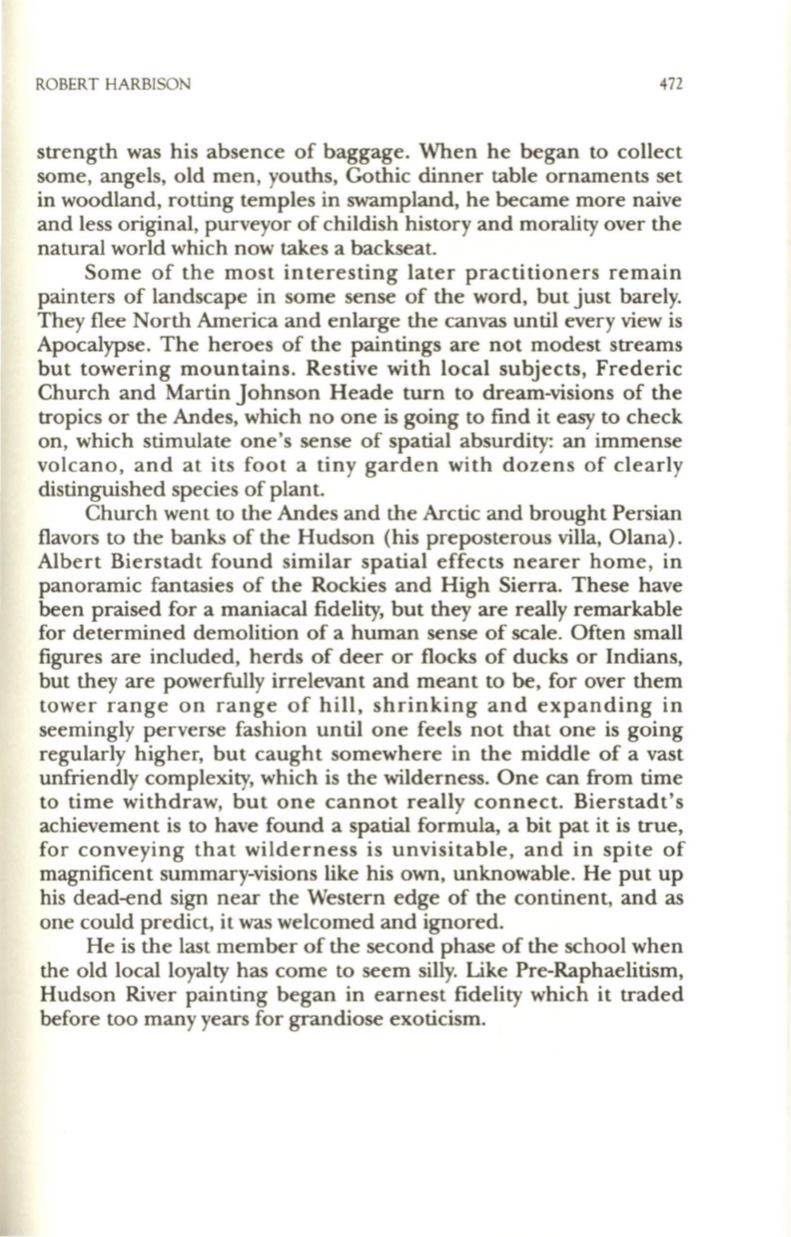
ROBERT HARBISON
472
strength was his absence of baggage. When he began to collect
some, angels, old men, youths, Gothic dinner table ornaments set
in woodland, rotting temples in swampland, he became more naive
and less original, purveyor of childish history and morality over the
natural world which now takes a backseat.
Some of the most interesting later practitioners remain
painters of landscape in some sense of the word, but just barely.
They flee North America and enlarge the canvas until every view is
Apocalypse. The heroes of the paintings are not modest streams
but towering mountains. Restive with local subjects, Frederic
Church and Martin Johnson Heade turn to dream-visions of the
tropics or the Andes, which no one is going to find it easy to check
on, which stimulate one's sense of spatial absurdity: an immense
volcano, and at its foot a tiny garden with dozens of clearly
distinguished species of plant.
Church went to the Andes and the Arctic and brought Persian
flavors to the banks of the Hudson (his preposterous villa, Olana).
Albert Bierstadt found similar spatial effects nearer home, in
panoramic fantasies of the Rockies and High Sierra. These have
been praised for a maniacal fidelity, but they are really remarkable
for determined demolition of a human sense of scale. Often small
figures are included, herds of deer or flocks of ducks or Indians,
but they are powerfully irrelevant and meant to be, for over them
tower range on range of hill, shrinking and expanding in
seemingly perverse fashion until one feels not that one is going
regularly higher, but caught somewhere in the middle of a vast
unfriendly complexity, which is the wilderness. One can from time
to time withdraw, but one cannot really connect. Bierstadt's
achievement is to have found a spatial formula, a bit pat it is true,
for conveying that wilderness is unvisitable, and in spite of
magnificent summary-visions like his own, unknowable. He put up
his dead-end sign near the Western edge of the continent, and as
one could predict, it was welcomed and ignored.
He is the last member of the second phase of the school when
the old local loyalty has come to seem silly. Like Pre-Raphaelitism,
Hudson River painting began in earnest fidelity which it traded
before too many years for grandiose exoticism.


